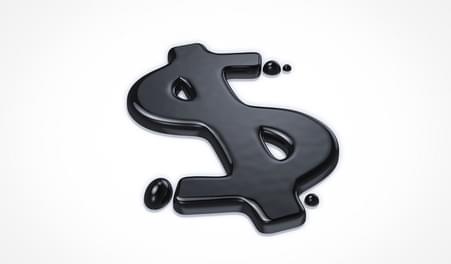Investment grade EM sovereigns delivered negative returns in 2015 and underperformed their high yield peers by 5%, whilst in EM corporates, both high-yield and investment grade, delivered positive returns and the overall asset class remains majority investment grade. Credit fundamentals are likely to drive the performance going forward and ratings of quasi-sovereigns will continue to decouple from those of the sovereigns due to deteriorating fundamentals of the former and limited capacity and willingness to support from the latter.
Timing for adding EM risk in 2016 will be a key and it will not be a smooth ride. Last year was extremely volatile and eventful from headline risks and rating downgrade and 2016 could see more of the same, with elevated geopolitical risks. Some analysts are drawing a parallel to Russia in 2015 that Brazil could be the trade of 2016. Some of Brazilian credits will indeed outperform and the overall outlook could turn benign if commodities recovered.
Nevertheless, Brazilian credit is one of the most diversified in terms of sectors and ratings in EM space, thus it faces a number of uncorrelated challenges (e.g commodities, BRL, regulatory issues particularly for banks following the adoption of the new resolution regime, debt maturities piling up whilst the markets remain close, deteriorating credit metrics and complicated political backdrop). Those challenges are far from being addressed by cheap and effective coordinated measures. It is clear, though, that Brazil will dominate credit headlines and China will continue to dominate macro headlines and overall EM sentiments.
Commodities are largely discussed as the key driver for EM asset class as the latter holds the majority of untapped commodity reserves in the world and operates some of the cheapest and the most cost-effective oil fields and metal mines. For the last decade, EM has attracted a large amount of international capital, thus becoming integrated part in global markets. The key driver for the commodity supercycle for the last ten years was China and its unprecedented double digit growth. In 2014, China accounted for 50% of global demand for aluminium, 47% of copper, 46% of zinc, 51% of nickel and 46% of steel. Hence, the rebalancing of China economy is impacting the commodity fundamentals in metal and mining sector across the world.
Whilst the slowdown of the Chinese economy for the last two years has put pressure on commodity prices, it also evidenced the weaknesses in export growth models in some EM countries. Hence, the quality and speed of economic adjustments in EM will continue to be tested in 2016 and this will inevitably impact the operating environment of EM corporates and banks. External debt issued by EM energy and metal companies accounted for about 22% and 6% of global EM corporate indices in January 2016, respectively.
EM banking sector is likely to be under increased scrutiny in 2016. Expected further slowdown in economic growth could pose risks on banks’ asset quality given the rapid build-up of credit over the last five years. Excluding China, EM private sector debt to GDP increased by 15.5% to 80% in 2015 (including China, it stood at 104%), whilst developed markets has been deleveraging slowly from 134% to 126%, during that period based on JP Morgan research. Although strains in the sector will be notable, it is likely that the high-yield segment will be more vulnerable due to limited access to international funding and/or weak sovereign support. At the start of this year, EM financials accounted for 23% of global EM credit indices, and 19% are investment grade. EM IG banks with external debt outstanding are mostly systemically important, benefit from strong financial metrics, lack of financial derivatives and majority compliant with Basel III regulation. Hence, they should be expected to demonstrate adequate and prudent financial performance.
EM liquidity continues to deteriorate as the regulatory framework for market-makers remains rigid and they are unable to mitigate smoothly outflows. The electronic trading has increased but still accounts for about 25% of secondary trading and proves to be far from efficient to deal with bigger sizes. Perhaps this is further complicated by the dispersion of EM credit across four main regions, the need for dealing with different local regulatory regimes, and challenges faced by the international market-makers to bring coherent market practises to the level acceptable to international investors. As liquidity is unlikely to improve, the market volatility will remain elevated.
EM IG credit, which accounts for 65% of total external debt issued by EM corporates and financials, is still going to constitute the core of investment portfolios. In particular, investment grade credit benefits from strong fundamentals and has demonstrated financial discipline in 2015. In low growth environment, regulated business with predictable cash flows, such as telecoms and utilities, are likely to be attractive. IG rated financial institutions, which operate in well regulated banking regimes would be also preferred as their outstanding debt tend to have shorter duration. Instruments issued by large EM IG oil and gas producers, which benefit from low cost production and flexible domestic exchange rate are also attractive, given the valuations and material cut in capex to offset decline in oil price.
The outlook for the metal and mining sector is bleak and the rating pressure will continue. EM HY credit, which have investment grade metrics but remains constrained by sovereign high-yield ratings, is likely to outperform similarly rated peers, despite the latter could be able to offer higher yields but would be prone to higher headline risks and possible defaults.
In 2016, chasing yield would be risky, ungrateful, and an expensive exercise. As some analysts rightly pointed, 80 could be the new par level going forward. At the start of 2016, about 8.6% of JP Morgan EM corporate index is trading at price below 80, compared to 4.8% in January 2015. In EM sovereign indices the share is 7% vs 5%, respectively. In BAML Global HY credit indices, the share of instruments trading below the 80 handle has been relatively stable at about 13% for the same period. The trend has not left out US BBB non-financial credit, which have shown a rise to 4.8% of instruments trading below 80 in Jan’16 vs 0.34% in Jan’15. The rising share of instruments trading below 80 across all assets reflects decoupling of credit fundamental drivers from the technical vortex forces. In EM, it has been a growing concern about rising default risks in EM, which are expected to increase to 4% in 2016 vs 3% in US HY based on JPM estimates. The debt sustainability in some quasi-sovereign credits, which stand-alone ratings are well below their respective sovereigns, could be questionable and will continue to pose risks to their respective sovereigns.
The falling angels in EM are likely to create new headaches following technical issues related to their index membership and valuation swings experienced by their bond holders last year. In particular, their bond documentation resembled IG benchmarks, thus largely contained little or no financial covenants. As they could face more challenges to access debt capital markets, investors could face some less market friendly actions, and the legal framework in EM is far from perfect.
Overall, EM credit is marked by multiple layers of investment themes in 2016: commodities outlook, China sentiment, geopolitical and corporate governance risks, if all played at the same time as we have seen on a few occasions last year, could spark a wide-spread sell-off.
The geographical diversification of EM as well as supportive local bids in some countries may offer a place to hide, but the tail risk of liquidity premiums and outflows are likely to limit the gains. The range of volatility could prompt some policy measures, which could alleviate the magnitude of macro risks. Hence, the operating environment in the second half could be normalised to some extent. Although the volatility will be high, it would also offer unprecedented investment opportunities as seen with the returns in 2015 ranging from -17% to 30% at country and security levels. The financial discipline praised across EM IG credit will continue to be tested as weak economic growth and commodity prices are here to stay.
Hence, an investment strategy based on credit fundamentals and supportive technicals will pay off. The rising default rate will yet again highlight the oversight in some covenant light investment instruments. The blanket government support, which has been largely assumed at the time of issue of most quasi-sovereign debt, is likely to be replaced with strings, thus their spreads will continue to drift wider and ratings will continue to converge lower to their stand-alone levels. Whilst 2015 have been labelled by a number of allegorical names related to awakening and drive, 2016 is likely to continue to be marked by keeping your focus and eyes wide open.







